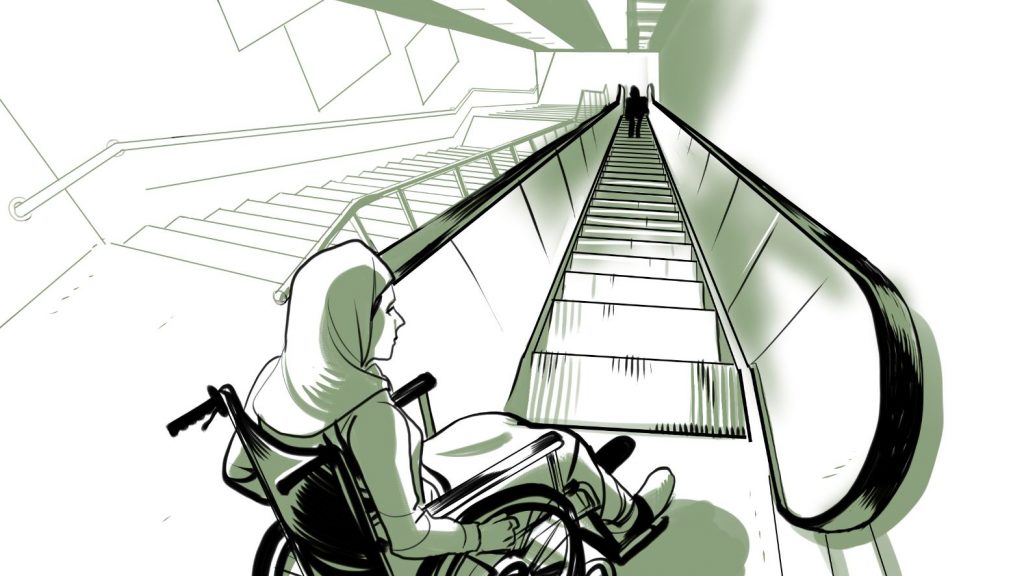Inaccessible Public Transportation
 As a result of poor accessibility to public transportation, roads, and buildings, many people with disabilities in Iran we interviewed remain trapped in their homes, unable to live independently and participate in society on an equal basis with others. For example, although there are some buses with ramps accessible for people who use wheelchairs or walkers, some people reported that drivers often do not know how to open the ramp. In larger cities with metros, there are elevators in some stations, but they are often out of service. Some wheelchair users resorted to using escalators, despite the dangers.
As a result of poor accessibility to public transportation, roads, and buildings, many people with disabilities in Iran we interviewed remain trapped in their homes, unable to live independently and participate in society on an equal basis with others. For example, although there are some buses with ramps accessible for people who use wheelchairs or walkers, some people reported that drivers often do not know how to open the ramp. In larger cities with metros, there are elevators in some stations, but they are often out of service. Some wheelchair users resorted to using escalators, despite the dangers.
For people who are blind, bus stops are not announced, and regular buses may stop outside of designated stops, hindering the ability of a blind person to count stops as a means of orienting in the absence of announcements. At least one blind person has died and several others have been injured while trying to board a train in the Tehran metro in recent years, according to media reports.
People living in smaller cities and rural areas faced particular difficulties in accessing transportation, since public transportation in these locations is either very minimal or does not exist at all, and where it does exist, it is overwhelmingly inaccessible.




